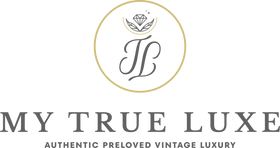In an era where sustainability is becoming increasingly important, many consumers are looking for ways to reduce their environmental footprint without compromising on style and quality. One of the most effective ways to do this is by choosing preowned luxury leather goods. Not only do these items offer timeless elegance and durability, but they also contribute significantly to environmental conservation efforts.
The Environmental Impact of New Leather Production
Leather production is a resource-intensive process that has significant environmental repercussions. According to a report by the World Bank, the leather tanning and processing industry is one of the top ten polluters globally, responsible for about 20% of the world's industrial water pollution. The tanning process, which transforms raw hides into durable leather, involves the use of various chemicals, including chromium, which can be harmful to both the environment and human health if not properly managed.
Additionally, the livestock industry, which supplies hides for leather, is a major contributor to deforestation, greenhouse gas emissions, and water consumption. The United Nations Food and Agriculture Organization (FAO) estimates that livestock production accounts for 14.5% of all anthropogenic greenhouse gas emissions, with cattle rearing being a primary contributor.
Benefits of Reusing and Recycling Luxury Leather Goods
Opting for preowned luxury leather goods is a powerful way to mitigate these environmental impacts. By extending the lifecycle of these products, we reduce the demand for new leather, thereby decreasing the associated environmental burdens. Here are some key benefits of reusing and recycling luxury leather goods:
1. Reduced Waste
The fashion industry is notorious for its high levels of waste, with millions of tons of textile waste ending up in landfills each year. Preowned goods help divert these items from landfills, promoting a circular economy where products are reused and recycled.
2. Lower Carbon Footprint
Preowned luxury items have a significantly lower carbon footprint compared to new ones. A study by the Ellen MacArthur Foundation found that extending the life of clothing by an extra nine months can reduce its carbon, water, and waste footprints by around 20-30%.
3. Conservation of Resources
Producing new leather requires substantial natural resources, including water and energy. By choosing preowned items, we conserve these resources and reduce the environmental strain associated with new production.
Case Studies and Statistics on Environmental Impact Reduction
Several studies and real-world examples highlight the positive environmental impact of choosing preowned luxury goods. For instance, a report by ThredUp, a leading online consignment and thrift store, found that buying a used item instead of a new one reduces its carbon footprint by 82%.
Moreover, luxury resale platforms like The RealReal have published sustainability reports showcasing the significant environmental savings achieved through the resale of luxury goods. According to their 2020 report, the company’s resale activities saved over 13,000 metric tons of carbon and 595 million liters of water in one year alone.
Personal Stories of Eco-Conscious Consumers
Many consumers are making the shift to preowned luxury goods as part of their commitment to sustainability. For example, fashion influencer Jane Doe, known for her advocacy of sustainable fashion, shared her experience of transitioning to preowned luxury items: “Switching to preowned luxury leather goods has been a game-changer for me. Not only do I get to enjoy beautiful, high-quality pieces, but I also feel good knowing that I’m contributing to a more sustainable future.”
Tips on Finding High-Quality Preowned Items
For those new to the world of preowned luxury, here are some tips to help you find high-quality items:
1. Research:
Learn about the brands and products you’re interested in. Familiarize yourself with their characteristics, materials, and craftsmanship.
2. Check for Authenticity:
Always buy from reputable sellers who provide authenticity guarantees. Look for certification from recognized authorities.
3. Inspect the Condition:
Carefully examine the condition of the item. Look for signs of wear and tear, and ask for detailed photos and descriptions if buying online.
4. Ask About Maintenance:
Inquire about any restoration or maintenance work that has been done. Well-maintained items are likely to last longer.
Choosing preowned luxury leather goods is not only a stylish and cost-effective choice but also an environmentally responsible one. By extending the life of these beautiful items, we can significantly reduce our environmental footprint and contribute to a more sustainable fashion industry. At My True Luxe, we are committed to offering a curated selection of preowned luxury goods that combine elegance with eco-consciousness. Join us in making a positive impact on the planet, one luxury item at a time.

